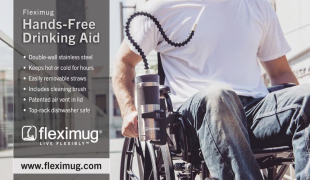- 9286
- 550
- 11
- 9
- 0
- Help Ukraine
About the solution
Shireen came up with the idea for this device at a wedding in 2012, when she realized she had forgotton her gluten-free snacks at home and the caterers for the event couldn’t tell her whether or not her meal contained gluten.
The Nima, a pocket-size device, works like this: You put a tiny amount of food or liquid (one-eighth of a teaspoon) into a one-time-use capsule, then screw on the cap to grind it up. The capsule contains a fluid that extracts protein from the sample so it can interact with a test strip which is coated with antibodies and changes color in the presence of gluten. The palm-sized Nima, which the capsule is then placed into, translates the reading into a happy face (no gluten) or sad face (gluten). 6SensorLabs says that within two minutes, the device can detect gluten levels to 20 parts per million, the standard for “gluten-free” labels set by the FDA.
At the time, Yates was earning her MBA at MIT. She teamed up with gluten-free schoolmate Scott Sundvor, then an undergraduate in mechanical engineering; together they founded 6SensorLabs and relocated to San Francisco in 2013.
6SensorLabs has priced the device between $179 and $199 until the pre sale ends. After that, it will cost $249 with a monthly subscription for a dozen capsules running $47.95.
More info: https://nimasensor.com
Adapted from: http://bzfd.it/2coZL1j
What about you, do you have any solutions? Please share them with the Patient Innovation community!
https://www.youtube.com/watch?v=bcPnXCjxOs0
这些解决方案不应包括使用药物,化学品或生物制品(包括食品);创伤性设备;冒犯性的,商业或内在危险的内容。该解决方案未经医学验证。请谨慎进行!如果您有任何疑问,请咨询健康专家。
DISCLAIMER: This story was written by someone who is not the author of the solution, therefore please be advised that, although it was written with the utmost respect for the innovation and the innovator, there can be some incorrect statements. If you find any errors please contact the patient Innovation team via info@patient-innovation.com
-
-
402
-
0
-
6566

The Haberman Feeder- a mum's invention
VENTILATION
(SELF)-CARE: DRINKING: Drinking independently.
CAREGIVING
SWALLOWING: Swalling food and liquids
Down Syndrome (Trisomy 21)
Assistive Daily Life Device (to help ADL)
Promoting self-management
Enhancing digestive function
Support on Puerperium/Post-childbirth
Caregiving Support
Gastroenterology
General and Family Medicine
Medical Genetics
Pediatrics
Physical Medicine and Rehabilitation
United Kingdom
-
-
-
292
-
0
-
3184

Patient Sam Jactel designed an app - Ayble health - that allows patients to create a personalised plan for a healthier gut.
(SELF)-CARE: EATING: Eating independently.
(SELF)-CARE: DRINKING: Drinking independently.
(SELF)-CONTROL: BOWEL CONTINENCE: Maintaining bowel continence
CAREGIVING
Cooking
Social interaction
Chron's Disease
oesophageal disorders (oesophagitis, gastroesophageal reflux disease, gastroesophageal sphincter insufficiency)
Inflammatory Bowel Disease
App (Including when connected with wearable)
Strategy/Tip
Abdominal pain
Weight loss
Indigestion (dyspepsia)
Vomiting (Regurgitation)
Abdominal swelling or mass
Weight gain
Enhancing health literacy
Promoting self-management
Enhancing digestive function
Manage Medication
Preserving Organ Function
Alleviating Allergies
Preventing (Vaccination, Protection, Falls, Research/Mapping)
Raise awareness
Caregiving Support
Gastroenterology
General and Family Medicine
General Surgery
Internal Medicine
Pediatrics
United States
-
-
-
246
-
0
-
2502

David Cardell creates Fleximug to help his mother with Multiple sclerosis (MS)
(SELF)-CARE: DRINKING: Drinking independently.
SWALLOWING: Swalling food and liquids
CAREGIVING
Multiple Sclerosis
Assistive Daily Life Device (to help ADL)
Restoring mobility
Replacing lost limbs
Enhancing health literacy
Promoting self-management
Enhancing digestive function
Promoting inclusivity and social integration
General and Family Medicine
Internal Medicine
Medical Genetics
Neurology
Rheumatology
United States
-
 zh
zh